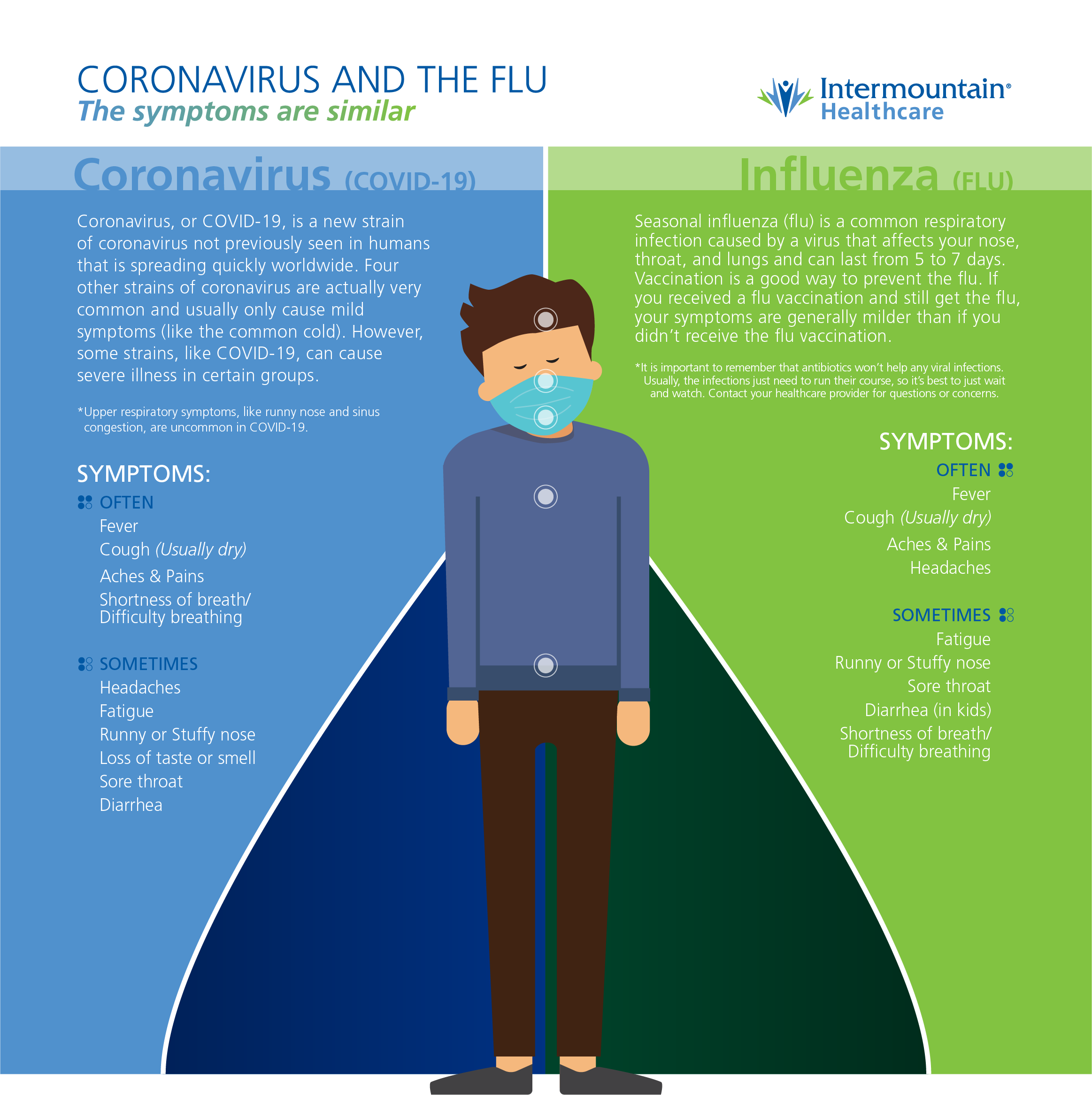How to Tell Difference Between Cold and Flu

If you prefer to listen to this article, click on the SoundCloud player below.

Fever, chills, body aches, and cough. All the symptoms seem the same for a cold, the flu, seasonal allergies, and coronavirus, also known as COVID-19. How do you know the difference? Here's information to help you better understand the signs, symptoms, and treatments.
While you may feel miserable when you have a cold, the symptoms are generally mild compared to more aggressive viruses like the flu. A cold can cause any or all of these symptoms:
- Runny or stuffy nose
- Cough (mild)
- Fatigue (sometimes)
- Sneezing
- Watery eyes
- Sore throat
- Headaches (rarely)
- Aches and pains
Most over-the-counter medications have, at best, moderate effects on cold symptoms. A typical cold will last on average 7 to 10 days. The majority of the symptoms are actually not caused by the infection itself, but rather our body's immune system trying get rid of it. Most cold viruses will go away if we're patient and give our bodies time to fight them. Your immune system is the greatest defense against the common cold.
More information about the common cold:
- Colds and Coughs in Adults: Managing Viral Infections
- Colds and Coughs in Children and Adolescents: Managing Viral Infections
Seasonal influenza (flu) is still active and generally comes on fast and furious. It's a common respiratory infection caused by a virus that affects your nose, throat, and lungs and can last from 5 to 7 days. Here's are some common symptoms of the flu:
- Fever and/or chills
- Cough (usually dry)
- Fatigue
- Aches and pains
- Runny or stuffy nose (sometimes)
- Sore throat (sometimes)
- Diarrhea (sometimes in children)
Unlike for colds or coronavirus, vaccination is a good way to prevent the flu. If you received a flu shot and still get the flu, your symptoms are generally milder than if you didn't receive the flu shot. Most people with the flu get well without medical treatment. Stay home and get plenty of rest and fluids and treat a fever with acetaminophen (Tylenol) or ibuprofen (Advil, Motrin).
More information about the flu:
- Influenza – What you need to know and do
- Let's Talk About the Flu – for Kids
It's important to remember that antibiotics won't help any viral infections. Usually, the infections just need to run their course, so it's best to just wait and watch. If your viral symptoms get better, and then days later suddenly get worse, you should contact your healthcare provider who can evaluate whether you may have a bacterial infection.

Spring is here and you've had a runny nose and itchy eyes since the snow started to melt. It's possible that you might have a cold, but it could also be seasonal allergies. Here's what to look for:
- Itchy nose, eyes, throat, sinuses, and ear canals
- Fatigue (sometimes)
- Cough
- Sneezing
- Runny or stuffy nose
- Watery eyes
- Headaches (sometimes)
- Shortness of breath
The most common cause of allergies in the spring is pollen. Pollen floats through the air from a variety of plants. Pollen is nearly invisible to the eye, but can wreak havoc on your body's immune system. If you have springtime allergies, your body's immune system is releasing antibodies to fight the allergens in your body. This will release histamines in your blood that trigger things like a runny nose or itchy eyes. You may experience more allergy symptoms on windy days when pollen counts are high.
Beyond basic prevention, there are also things you can do to help alleviate the symptoms of your springtime allergies. Over the counter medications such as antihistamines and decongestants can help reduce sneezing, itching, and congestion. You may also find relief with a nasal spray that can help decongest or ease inflammation in your sinuses. In addition, eye drops may also help relieve itchy or watery eyes.
How to Tell Difference Between Cold and Flu
Source: https://intermountainhealthcare.org/blogs/topics/live-well/2020/03/whats-the-difference-between-a-cold-the-flu-and-coronavirus/
